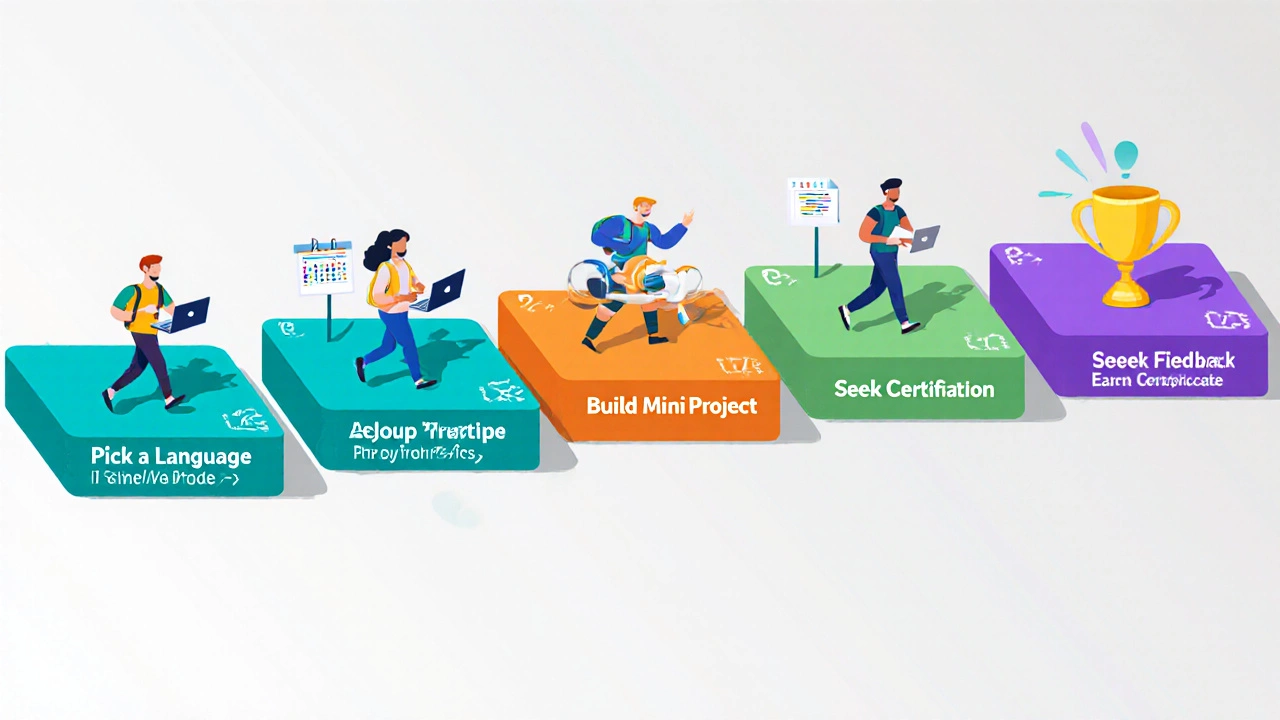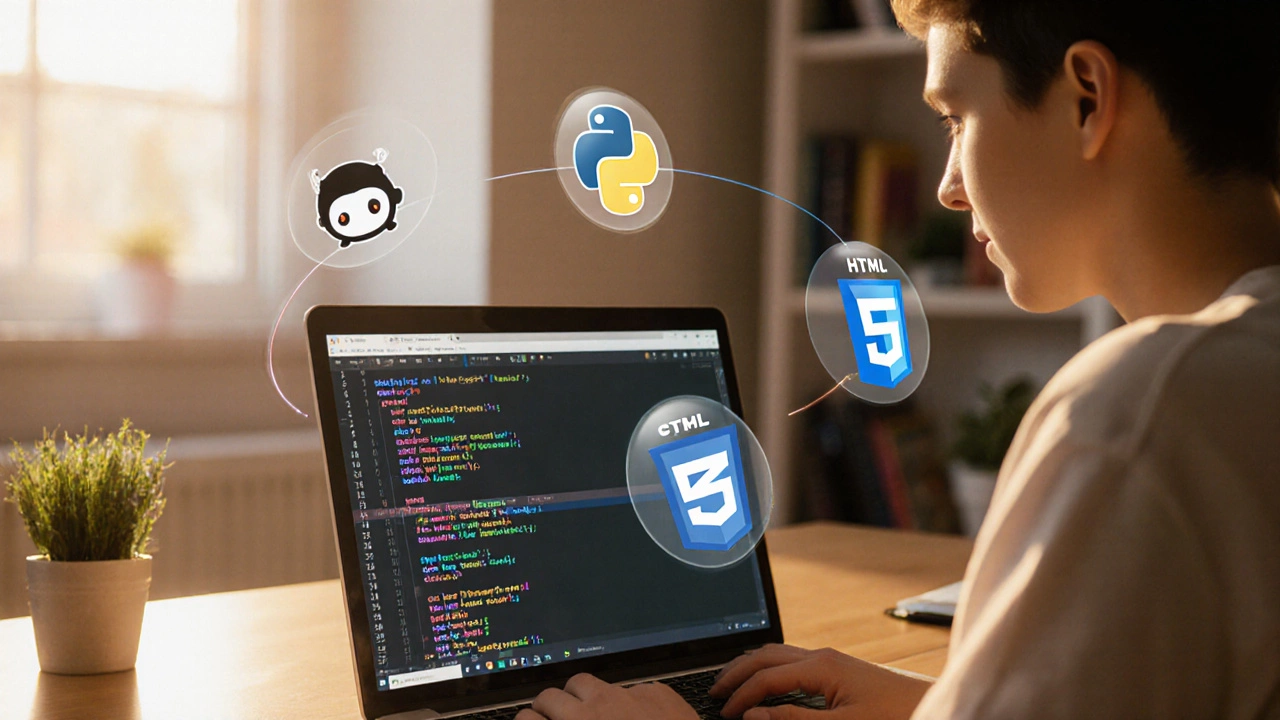Free Coding Platform Recommender
Find Your Perfect Free Learning Platform
Answer a few quick questions to get personalized recommendations from the top free coding resources mentioned in the article.
Your Recommendations
Ever stared at a job ad that lists "Python" or "JavaScript" as required skills and wondered if you could pick them up without burning a hole in your wallet? The good news is you can learn coding for free-there are dozens of high‑quality resources that cost nothing, and they’re constantly refreshed to keep up with industry trends.
What is Free Coding Education?
Free coding education is the practice of teaching programming concepts, languages, and development workflows at no monetary cost to the learner. It typically relies on sponsorships, community contributions, or open‑source models. While you won’t receive a formal diploma, you can still build a solid portfolio, earn industry‑recognised certificates, and land real‑world projects-all without paying tuition.
Why Free Learning Works (and When It Doesn’t)
Free platforms lean on self‑paced lessons, interactive sandboxes, and community‑driven support. This model works best if you’re disciplined, can set clear goals, and enjoy learning by doing. It’s less ideal for those who need a structured classroom schedule, personal mentorship, or a credential that a traditional university provides.
Top Free Coding Platforms
- Codecademy offers interactive, browser‑based lessons covering HTML, CSS, JavaScript, Python, and more. The free tier includes core modules and instant feedback on code.
- freeCodeCamp provides a full curriculum from basic HTML to full‑stack JavaScript, culminating in real‑world projects that earn you verified certifications.
- Khan Academy hosts video tutorials and hands‑on challenges for JavaScript, SQL, and computer‑science fundamentals.
- edX partners with universities to deliver free audit tracks for courses like Harvard’s CS50 and MIT’s Introduction to Computer Science.
- Coursera lets you audit most programming courses for free; you only pay if you want an official certificate.
- GitHub Learning Lab teaches Git, GitHub workflows, and real‑world collaboration through guided bots.
- The Odin Project delivers a full‑stack web development path that mirrors a boot‑camp experience, using only free resources.
- W3Schools offers quick reference guides and live editors for HTML, CSS, JavaScript, and server‑side languages.
- Google Developers Codelabs provides short, hands‑on labs for Android, web, and cloud development.
- Stack Overflow isn’t a course, but its Q&A community is an essential free resource for troubleshooting code.

How to Craft Your Own Free Learning Path
- Pick a language that matches your goal. For web front‑end, start with HTML → CSS → JavaScript. For data science, begin with Python → pandas → NumPy.
- Follow a structured curriculum. Use a free platform that offers a roadmap (e.g., freeCodeCamp’s “Responsive Web Design” then “JavaScript Algorithms”).
- Practice daily. Aim for 30‑60 minutes of coding each day; consistency beats marathon sessions.
- Build mini‑projects. Apply each new concept by creating a small app-a to‑do list, a weather widget, or a simple API.
- Document your work. Push code to GitHub, write short READMEs, and track progress in a personal blog.
- Seek feedback. Post questions on Stack Overflow or join Discord communities linked to your learning platform.
- Earn free certificates. Complete the required projects on freeCodeCamp or edX audit tracks and add them to your résumé.
Common Pitfalls and How to Dodge Them
Pitfall 1: Jumping between too many platforms. Stick to one main curriculum and supplement with occasional videos or docs. Switching too often fragments your knowledge.
Pitfall 2: Ignoring fundamentals. Spend extra time on core concepts like loops, data structures, and version control. These basics pay off when you move to frameworks.
Pitfall 3: Not building a portfolio. Even if you never charge for a course, a public GitHub repo with 3-4 polished projects tells employers you can deliver.
Pitfall 4: Procrastination. Set weekly milestones and treat them like deadlines. Use tools like Trello or Notion to keep yourself accountable.
Quick Comparison of Free Platforms
| Platform | Primary Language Focus | Interactive IDE | Project‑Based Learning | Free Certificate |
|---|---|---|---|---|
| Codecademy | Multiple (HTML, CSS, JS, Python) | Yes | Limited (free tier) | No (paid Pro) |
| freeCodeCamp | JavaScript (Full‑Stack) | Yes | Extensive (5 certs) | Yes |
| Khan Academy | JavaScript, SQL | Yes | Basic exercises | No |
| edX (audit) | Varies (CS, Python, C++) | Depends on course | Varies (labs, quizzes) | Optional paid |
| The Odin Project | Ruby, JavaScript | No (external editors) | Full‑stack projects | No |

Checklist: Stay on Track While Learning for Free
- ✅ Set a clear 3‑month goal (e.g., build a personal website).
- ✅ Choose one primary platform and stick to its roadmap.
- ✅ Commit to coding daily, even if it’s only 20 minutes.
- ✅ Complete at least one real‑world project per month.
- ✅ Publish code on GitHub and write a brief project summary.
- ✅ Collect any free certificates and add them to your LinkedIn profile.
- ✅ Review progress every two weeks and adjust the plan as needed.
Frequently Asked Questions
Can I get a job after only using free resources?
Yes. Many employers care more about what you can build than where you learned. A solid portfolio,GitHub activity, and a few free certificates can convince recruiters you’re capable.
Do free platforms replace a computer‑science degree?
Not always. A degree provides deep theory, networking opportunities, and a recognized credential. Free learning is great for skill‑based entry‑level roles, but for research or advanced positions a degree still holds weight.
How do I stay motivated without a paying instructor?
Join community Discords or Slack groups linked to the platform you use. Pair‑program with a friend. Publicly announce weekly goals on social media; accountability fuels consistency.
Are there hidden costs I should watch for?
Most platforms are truly free, but they may charge for premium certificates, mentorship, or cloud hosting. Stick to the free tier and use free hosting like GitHub Pages to avoid extra fees.
What hardware do I need to start?
A modest laptop (8 GB RAM, modern browser) is enough. Many platforms run entirely in the browser, so you don’t need heavy IDEs or local servers at the start.
Next Steps: Put Theory into Action
Pick the platform that best matches your career goal, sign up for a free account, and complete the first two modules today. By the end of the week, push a simple "Hello World" project to GitHub. From there, follow the checklist, keep a learning journal, and watch your confidence grow. Remember, the biggest barrier has always been money-now you’ve removed it.
